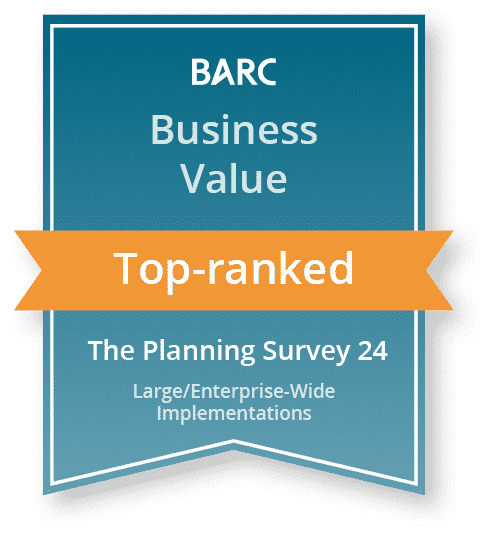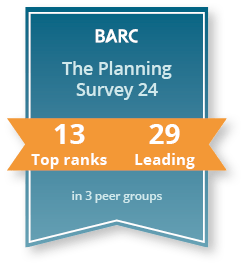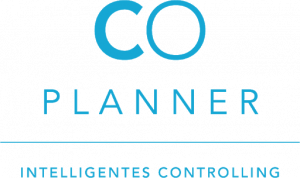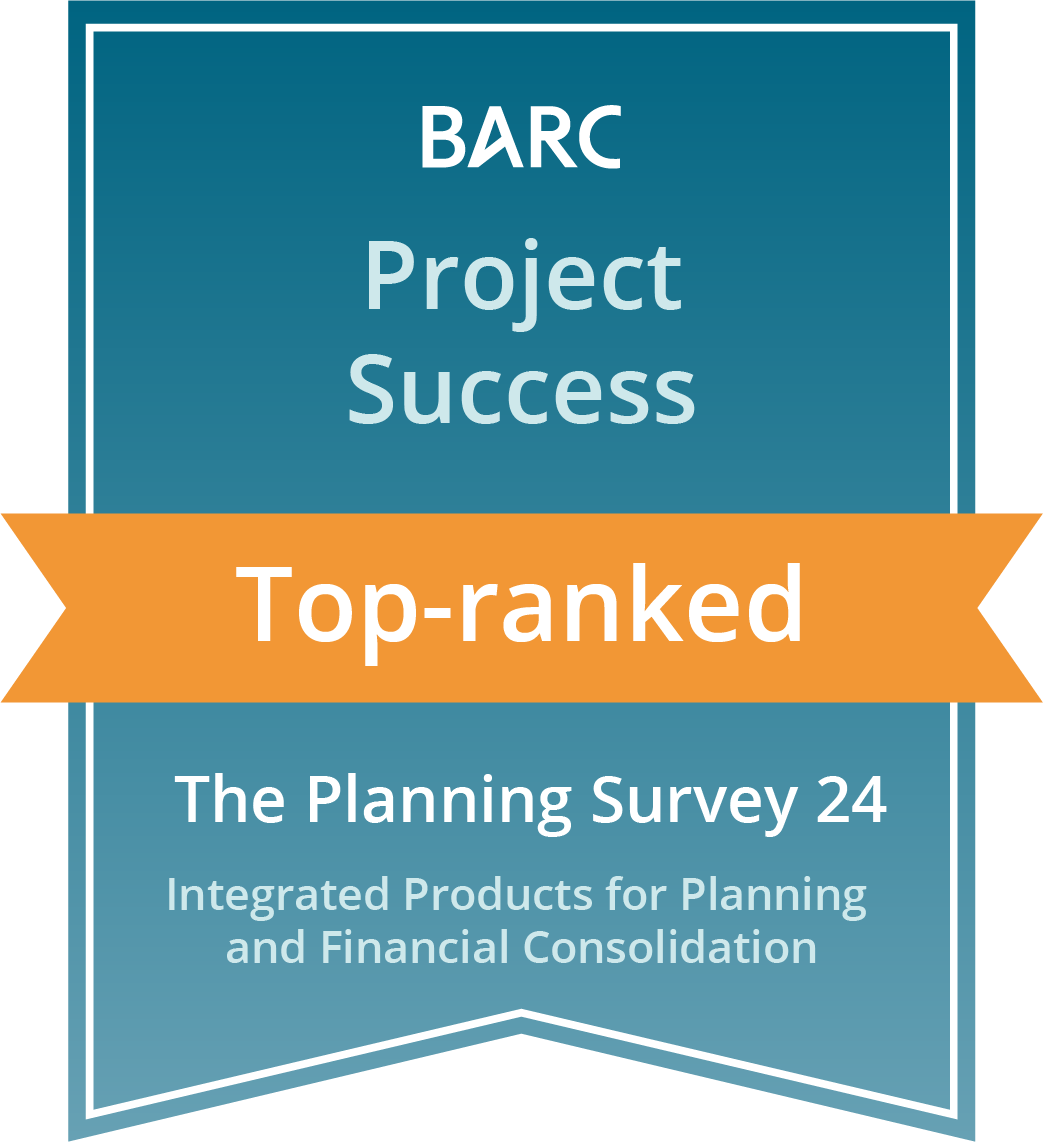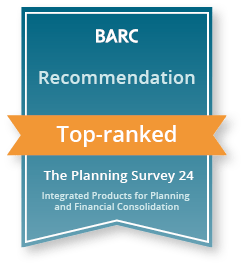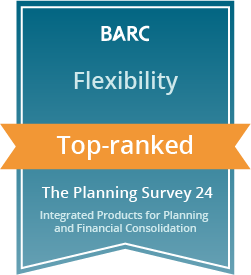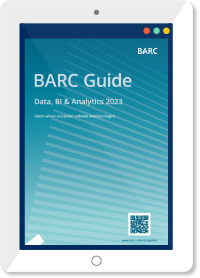Compare leading corporate performance management (CPM) tools and software
CPM involves planning, managing, controlling, and improving business performance at strategic, tactical and operational levels. It uses methods, tools and processes. Leading software tools integrate disciplines such as reporting, analysis, dashboarding, planning, group consolidation and strategy management for holistic business management.
- User rating
What is Anaplan
Cloud-based planning and performance management platform for use across financial and various operational business departments with complementary analytics functionality. Anaplan and its global partner ecosystem offer additional industry-specific prebuilt solutions across a number of verticals.
- Functions (BARC classification)
Functions (BARC classification)
● = Function covered, ●● = Functional focus
● = Function covered
●● = Functional focus
- User rating
What is Bissantz DeltaMaster
Integrated product for (advanced) analysis, reporting, dashboards and planning. Vast array of intelligent analysis functions for large data volumes (including statistical and advanced analytics methods) and innovative chart types for data-dense reports and dashboards.
- Functions (BARC classification)
Functions (BARC classification)
● = Function covered, ●● = Functional focus
● = Function covered
●● = Functional focus
- User rating
What is Board
Flexible, fully web-based platform with tightly integrated system architecture of proprietary multidimensional in-memory database and front ends. Graphical no-code development environment for business power users to create tailored planning and performance management applications.
- Functions (BARC classification)
Functions (BARC classification)
● = Function covered, ●● = Functional focus
● = Function covered
●● = Functional focus
- User rating
What is CCH Tagetik
Unified platform for financial corporate management (financial consolidation and close; budgeting, planning and forecasting; ESG and regulatory reporting; corporate tax). Supplementary solutions for financial and regulatory use cases (account reconciliation; financial reporting, disclosure management and iXBRL; transaction matching; IFRS 16, IFRS 17; and solvency II) as well as selected operational plans.
- Functions (BARC classification)
Functions (BARC classification)
● = Function covered, ●● = Functional focus
● = Function covered
●● = Functional focus
- User rating
What is CoPlanner
Integrated and feature-rich platform for building individual planning, budgeting and forecasting applications with supplementary functions for reporting, analysis and financial consolidation. Comprehensive planning functions for top-down and bottom-up planning including workflow support.
- Functions (BARC classification)
Functions (BARC classification)
● = Function covered, ●● = Functional focus
● = Function covered
●● = Functional focus
- User rating
What is Jedox
Flexible performance management platform for planning, budgeting and forecasting, reporting, dashboarding, analysis and financial consolidation, designed for business users. Supplementary marketplace for predefined but flexibly adaptable solutions and accelerators.
- Functions (BARC classification)
Functions (BARC classification)
● = Function covered, ●● = Functional focus
● = Function covered
●● = Functional focus
- User rating
What is Lucanet
Integrated software portfolio for financial performance management with solutions for financial consolidation and close, financial planning and budgeting, financial and legal reporting, ESG, tax and additional financial management topics.
- Functions (BARC classification)
Functions (BARC classification)
● = Function covered, ●● = Functional focus
● = Function covered
●● = Functional focus
- User rating
What is OneStream
Integrated performance management platform for financial consolidation and close, planning, budgeting and forecasting, reporting and analytics with built-in financial intelligence and financial data quality capabilities. Supplementary integrated marketplace with business and productivity solutions that allow customers to extend the platform with additional capabilities.
- Functions (BARC classification)
Functions (BARC classification)
● = Function covered, ●● = Functional focus
● = Function covered
●● = Functional focus
- User rating
What is Unit4 FP&A
Flexible, integrated performance management platform for planning, budgeting and forecasting, reporting, analysis, dashboarding and financial consolidation with complementary predefined business and industry solutions; focused on Unit4 ERP customers
- Functions (BARC classification)
Functions (BARC classification)
● = Function covered, ●● = Functional focus
● = Function covered
●● = Functional focus
- User rating
What is Valsight
Comprehensive platform for value-driver-based planning, forecasting and simulation including the transparent visualization and interactive analysis of simulation results.
- Functions (BARC classification)
Functions (BARC classification)
● = Function covered, ●● = Functional focus
● = Function covered
●● = Functional focus
- User rating
What is Vena
Cloud-based CPM platform for planning, budgeting and forecasting, reporting, analytics, group consolidation and financial statements based on Microsoft Excel as the user interface
- Functions (BARC classification)
Functions (BARC classification)
● = Function covered, ●● = Functional focus
● = Function covered
●● = Functional focus
- User rating
What is Corporate Planning Corporate Planner
Integrated platform for operational management, financial planning, sales management, financial consolidation, HR management and management reporting for business users. Comprehensive, predefined planning functions (with flexible capabilities for top-down and bottom-up planning) and business analyses.
- Functions (BARC classification)
Functions (BARC classification)
● = Function covered, ●● = Functional focus
● = Function covered
●● = Functional focus
- User rating
What is evidanza
Platform for building individual analytics and performance management applications (reporting, analysis, planning) with additional functions for collaboration.
- Functions (BARC classification)
Functions (BARC classification)
● = Function covered, ●● = Functional focus
● = Function covered
●● = Functional focus
- User rating
What is IBM Planning Analytics
Flexibile platform for business power users to create tailored planning, budgeting and forecasting as well as analytics applications based on a high-performance and scalable in-memory database. Comprehensive functionality for preparing individual content in Excel and publishing it to the web.
- Functions (BARC classification)
Functions (BARC classification)
● = Function covered, ●● = Functional focus
● = Function covered
●● = Functional focus
- User rating
What is insightsoftware IDL
Integrated financial performance management platform for financial consolidation, financial planning, operational planning, management reporting, regulatory reporting and analysis.
- Functions (BARC classification)
Functions (BARC classification)
● = Function covered, ●● = Functional focus
● = Function covered
●● = Functional focus
- User rating
What is macs Software
Comprehensive planning and performance management solution for fully integrated, detailed business planning (operational controlling, cost and performance accounting) including prebuilt business planning logic for integrated corporate planning, especially for medium-sized manufacturing companies.
- Functions (BARC classification)
Functions (BARC classification)
● = Function covered, ●● = Functional focus
● = Function covered
●● = Functional focus
- User rating
What is Oracle Cloud EPM
Comprehensive performance management portfolio including a full suite of products and configurable applications covering all relevant EPM processes (e.g., planning, budgeting and forecasting, profitability and cost management, financial consolidation and close, account reconciliation, financial and management reporting, tax provision and reporting, transfer pricing, ESG/sustainability reporting, analytics and enterprise data management).
- Functions (BARC classification)
Functions (BARC classification)
● = Function covered, ●● = Functional focus
● = Function covered
●● = Functional focus
- User rating
What is Phocas
Comprehensive cloud-based platform for BI and analytics, budgeting and forecasting, financial reporting and analysis. Flexible platform for business users to create individual planning, budgeting and forecasting applications, typically used in addition to Phocas’ BI and analytics capabilities.
- Functions (BARC classification)
Functions (BARC classification)
● = Function covered, ●● = Functional focus
● = Function covered
●● = Functional focus
- User rating
What is Prophix
Integrated, cloud-based performance management platform for mid-sized companies focused on planning, budgeting and forecasting, reporting and analysis. Comprehensive functionality for financial consolidation and close, management reporting, intercompany reconciliation as well as specialty solutions for IFRS 16 and iXBRL are available with the integration of Sigma Conso.
- Functions (BARC classification)
Functions (BARC classification)
● = Function covered, ●● = Functional focus
● = Function covered
●● = Functional focus
- User rating
What is SAP Analytics Cloud
Integrated business-user-friendly platform for enterprise planning and BI with embedded capabilities for augmented analytics and application design. Comprehensive capabilities for implementing custom planning applications with supporting workflow and collaboration functionality.
- Functions (BARC classification)
Functions (BARC classification)
● = Function covered, ●● = Functional focus
● = Function covered
●● = Functional focus
- User rating
What is SAP Business Planning and Consolidation (BPC)
Integrated solution for planning and financial consolidation based on SAP BW/4HANA as the technical basis with web and Excel front-ends
- Functions (BARC classification)
Functions (BARC classification)
● = Function covered, ●● = Functional focus
● = Function covered
●● = Functional focus
Are you a vendor and feel your solution is missing? Contact us to find out how to get your product listed.
Find out how we can help you.
Learn more about corporate performance management (CPM) software and comparing tools
Global markets and competition are dynamic and complex. The future is uncertain. Satisfying customer needs and maintaining profitability in volatile markets requires quick decisions and decisive action.
To meet these growing demands, companies need flexible decision support. Decision-makers need timely, high-quality information to make informed decisions. Efficient delivery of this information, detailed data analysis, and up-to-date business plans and forecasts are essential. This cannot be achieved without solid support from corporate performance management (CPM) software.
What is corporate performance management and what are CPM tools?
CPM involves the planning, management, control and improvement of corporate performance at strategic, tactical and operational levels. It uses methods, tools and processes. Leading software tools integrate disciplines such as reporting, analysis, dashboarding, planning, group consolidation or strategy management for holistic business management.
The constant pressure to improve efficiency is forcing companies to continually optimize the technology they use and automate processes. To achieve the best possible results, companies must drive the integration and functional software support of their business processes.
What are the typical features of corporate performance management software?
Modern CPM software platforms provide robust support for finance and controlling departments. The following core functions should be available in an easy-to-use, self-service format:
- Business Intelligence (BI): Support for cyclical standard reports, short-term ad-hoc queries and custom dashboards with options for interactive presentation of results
- Analytics: Support for flexible, dynamic data reporting, visual analysis and advanced analytics, including the integration of statistical models and machine learning (ML)
- Planning and budgeting: Support for a variety of planning approaches (top-down/bottom-up, centralized/decentralized), planning horizons (operational, mid-term, strategic) and sub-plans (e.g., financial, sales, production, resources, etc.)
- Simulation and analysis of scenarios, as well as flexible creation of (rolling) forecasts and predictive forecasting models
- Consolidate group results to meet external (legal, commercial) and internal (management views) requirements
- Communication of results (e.g. data storytelling) and process-supported collaboration (e.g. via workflows, collaboration)
- Regulation of data access and usable functions (security and governance)
What is the foundation of modern CPM platforms?
The core foundation of modern CPM software platforms is an integrated, scalable data repository for all types of data (e.g., actual, plan, forecast). This eliminates time-consuming and maintenance-intensive data copy processes and technology disruptions between software systems and departmental data silos. Centrally managed and harmonized structures and transactional data provide a single point of truth for CPM.
A consistent data model and key figure calculations are defined based on integrated data storage. This enables modeling of enterprise-wide and department-specific data views, supplemented by flexible time horizons for short-term operational, mid-term tactical and long-term strategic considerations. This data model can then be automated through data integration processes and continuously populated with data from upstream (operational) systems.
The standard scope of modern CPM software platforms should also include options for connecting other systems as additional data sources or for extending data models. Only then can they provide a reliable single point of truth for corporate governance and performance management.
Who needs CPM software?
The marketplace and competition require organizations to constantly improve their performance and make careful, forward-looking decisions. Finance and controlling departments have a special obligation to provide detailed insight into consistent data at all times, to keep track of the development of key figures and to constantly update plans and forecasts. With detailed data analysis and predictive forecasting, they provide the foundation for informed, transparent decisions. This requires an integrated view of data from all parts of the enterprise.
The support of powerful technology and software tools is essential when it comes to translating data insights into effective action. As a result, targeted investments in corporate performance management are at the top of many organizations’ agendas to achieve goals such as transparent, data-driven decision-making, increased efficiency, and automation.
What is the value of corporate performance management solutions?
There are many reasons why companies choose to implement corporate performance management products. All projects share a common goal: to gain a detailed understanding of the forces that influence markets and businesses, and the ability to make better decisions based on that knowledge.
In general, all CPM, business intelligence and analytics solutions are used to make better decisions based on data. The following benefits and value are most commonly achieved by companies using CPM tools:
- Better integration of business planning with BI/analytics and group consolidation
- Faster and more detailed reporting, analysis or planning
- Better integration of financial and operational planning
- Improved data quality
- Better integration of strategy management and operations
- Increased visibility and better decisions
CPM software must meet a company’s needs in order to generate business benefits and add value to the organization. Therefore, it is important to compare several corporate performance management tools during the selection process.
Why you should compare corporate performance management software
The CPM software market covers a wide range of offerings. Finding the right tool is not easy. In addition to well-known vendors with strong sales and marketing strategies, there are lesser-known, regional vendors that also offer sophisticated and comprehensive solutions.
A key success factor in selecting CPM software is focusing on individual requirements. This starts with a thorough functional, technical and organizational requirements analysis that includes all key future users of the tool. This ensures acceptance of the solution from the outset and includes the business departments as well as IT and management.
Once all requirements have been finalized and weighted, the evaluation of potential corporate performance management solutions can begin. The starting point is a long list of potential solutions. The next step is to reduce this list using individual knock-out criteria. This elimination process produces the shortlist – a compilation of a few suitable tools that meet all the key requirements.
The final step in the software selection process is to compare the shortlisted solutions in a detailed evaluation.
What to consider when comparing corporate performance management tools
This is a critical point to keep in mind when selecting and evaluating CPM software: All vendors have their own strengths and weaknesses. There is no one-size-fits-all solution. For this reason, the software selection process must always be requirements-driven, and solution offerings should be compared in detail to find the right solution for your company’s needs.
Especially in the context of a detailed evaluation, tools in the software selection process should be put through their paces with regard to all requirements, including a cost analysis. This provides investment security and minimizes the risk of making the wrong decision. Ultimately, it is the overall package of functional support and a solid technical foundation at a reasonable price/performance ratio that makes the difference.
Software decisions for corporate performance management tools are made on the basis of a wide range of criteria. In addition to the flexibility of a solution (e.g., usability for a wide range of applications), companies generally pay particular attention to the coverage of their planning, reporting and analysis requirements during the selection process.
While midsize companies place greater emphasis on criteria such as a solution’s price/performance ratio, predefined data connectivity from upstream systems and the availability of support resources, large companies pay more attention to high-performance processing of large volumes of data and handling of large numbers of users.
In general, the performance of solutions and their ease of use are key factors in the subsequent acceptance of software tools and should therefore be given high priority in the selection process.

